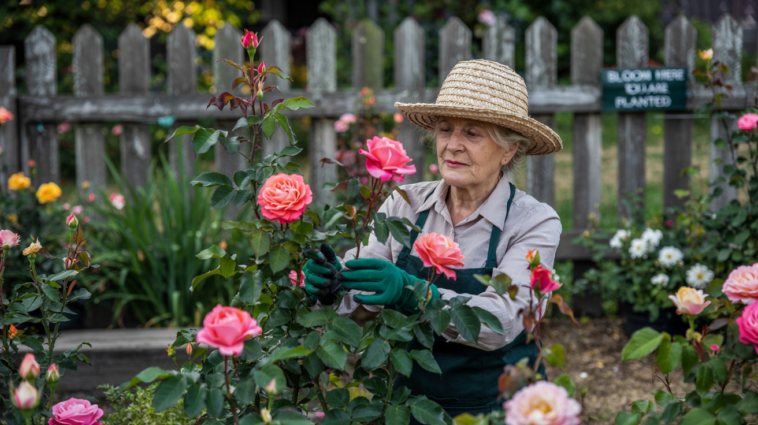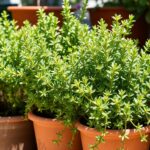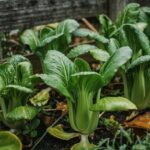When I first decided to start a garden, I imagined rows of thriving veggies, fragrant herbs brushing against my fingertips, and flowers blooming like something out of a postcard. In reality? My basil withered, my carrots came out weirdly shaped, and I somehow managed to overwater succulents (yes, really). Gardening was harder than I expected—but also more rewarding than I ever imagined.
Looking back now, with dirt under my nails and a small but thriving garden on my balcony, I can honestly say: I’ve learned a lot. So, here are 7 things I wish I knew before starting a garden—shared from experience, in hopes they’ll help you start smarter than I did.

1. Start Small—Really Small
I was so excited to get growing that I went overboard right away. Tomatoes, peppers, lettuce, cucumbers, herbs—I wanted it all. But trying to care for so many plants as a beginner was overwhelming. I didn’t yet understand how much light each plant needed or how often to water them, and it quickly became too much to manage.
What I wish I did instead was start with three or four easy plants. Herbs like basil or mint, and hardy veggies like radishes or lettuce would’ve been the perfect intro. Starting small helps you build confidence, understand your space, and—most importantly—not get discouraged.
2. It’s All About the Sunlight
One rookie mistake I made was underestimating how important sunlight is. I thought any bright spot would do, but many vegetables need at least 6 to 8 hours of direct sunlight a day. My first garden was in a partially shaded corner, and my tomatoes barely flowered.
Now, I observe my space for a few days before planting anything. I learned to track the sun throughout the day to see which areas get the most consistent light. You can also use sun calculator apps to help determine what will thrive where.
3. Soil Quality Matters More Than You Think
I used to believe soil was just dirt—throw some seeds in and wait, right? Not quite. Poor soil leads to poor plants, no matter how much water or sunlight you give them. I started out with generic store-bought garden soil, and it wasn’t long before my plants showed signs of nutrient deficiencies.
Now, I use a mix of high-quality potting mix, compost, and organic matter to ensure my plants get the nutrients they need. And for containers, I always make sure the soil is well-draining to prevent root rot.
4. Watering Takes Practice
In the beginning, I was either overwatering or underwatering—never quite hitting the sweet spot. I didn’t realize that each plant has its own needs and that things like temperature, sunlight, and container size affect how much water is needed.
One of the best habits I developed was checking the soil with my finger before watering. If the top inch is dry, it’s time to water. I also switched to watering in the early morning, which helps prevent evaporation and gives plants time to absorb moisture before the heat of the day.
5. Pests Are a Thing—and You Need a Plan
I had this idealistic vision of butterflies fluttering around and bees helping me pollinate. What I didn’t expect? Aphids, slugs, and whiteflies snacking on my plants before I even got a chance to harvest. My first basil plant was nearly demolished by tiny caterpillars overnight.
Now I inspect my plants regularly, keep a spray bottle of neem oil or diluted soap water handy, and plant companion plants like marigolds and nasturtiums to deter pests naturally. It’s all about prevention and observation.
6. Not All Seeds (or Plants) Are Created Equal
At first, I bought the cheapest seeds I could find, figuring they’d all grow the same. Big mistake. Germination was hit or miss, and I ended up wasting time and money. I also bought a few plants from box stores that turned out to be stressed, root-bound, or mislabelled.
I’ve learned to buy seeds and seedlings from reputable nurseries or trusted online sources. Heirloom varieties have become my go-to—they’re not only reliable but often more flavorful and interesting.
7. You Will Fail—and That’s Totally Okay
My biggest lesson? Failure is part of the process. I’ve killed more plants than I care to admit. I’ve accidentally over-fertilized, missed harvest windows, and let weeds get out of control. But every mistake taught me something.
Gardening isn’t about perfection. It’s about learning, experimenting, and connecting with nature. Every season brings new surprises, and even a small harvest feels like a huge win when it’s something you nurtured from seed to plate.

Final Thoughts
Starting a garden has been one of the most grounding and fulfilling things I’ve done. It’s not always easy—sometimes it’s downright frustrating—but there’s something incredibly satisfying about watching life grow under your care.
So, if you’re just getting started, take it slow, keep learning, and enjoy the process. Whether you’ve got a backyard, a balcony, or just a few pots on a windowsill, you’ve got the perfect place to grow something amazing.
And remember: Even if your first attempt flops, you’re still a gardener. Just try again.


